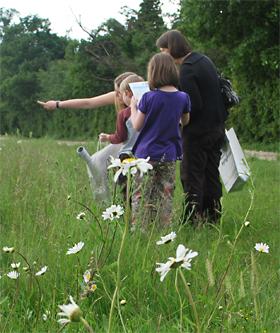
New TABLEFIT available:
New and existing users, please note that two new and improved versions can be downloaded here.
Both versions now accept larger number of samples (max 100,000) and produce more user-friendly output. Both versions have been rewritten in C#. V3 reproduces the existing TABLEFIT whilst V4 includes new wet grassland NVC units courtesy of the Floodplain Meadows Partnership.
TABLEFIT
TABLEFIT is a computer program that identifies vegetation types. By measuring how closely they align to certain standards, it is able to create an index of 'goodness-of-fit'. Vegetation types are then graded accordingly, allowing users to isolate the interesting samples that have equal goodness-of-fit to two types.
The program is then able to provide possible explanations for those anomalous types. It can predict, for example, whether they might be due to the absence of an expected species or to the presence of an unexpected species.
TABLEFIT was revised in 2015 to provide a cross-reference to the EUNIS system of habitats (European Environment Agency 2007).
TABLCORN
TABLCORN is a program that converts data from TABLEFIT format to Cornell Condensed Format (the input format for DECORANA and TWINSPAN). The updated TABLCORN version 1.0 allows for better control of species order and includes information on weed communities. Both versions include a full list of unabbreviated species names, as well as FORTRAN source code that allows you to run it on other machines.
Download the software
Access the attachment link at the bottom of this page to download the files directly to your computer. Fill out our short online form and download the files directly to your computer (a download link will appear after the form is submitted).
The information collected will only be used to supply details of updates to the software.
Visit the Modular Analysis of Vegetation Information System (MAVIS), which assigns vegetation data to the Countryside Vegetation System (CVS) and classifications used by the Countryside Survey 2000, as well as including classification programs for the National Vegetation Classification (NVC).
Acknowledgement
Tablefit is freely available to all but please acknowledge UKCEH and the writer of the program, Dr Mark Hill, in any publications.
Development was supported by the Natural Environment Research Council and the Joint Nature Conservation Committee.